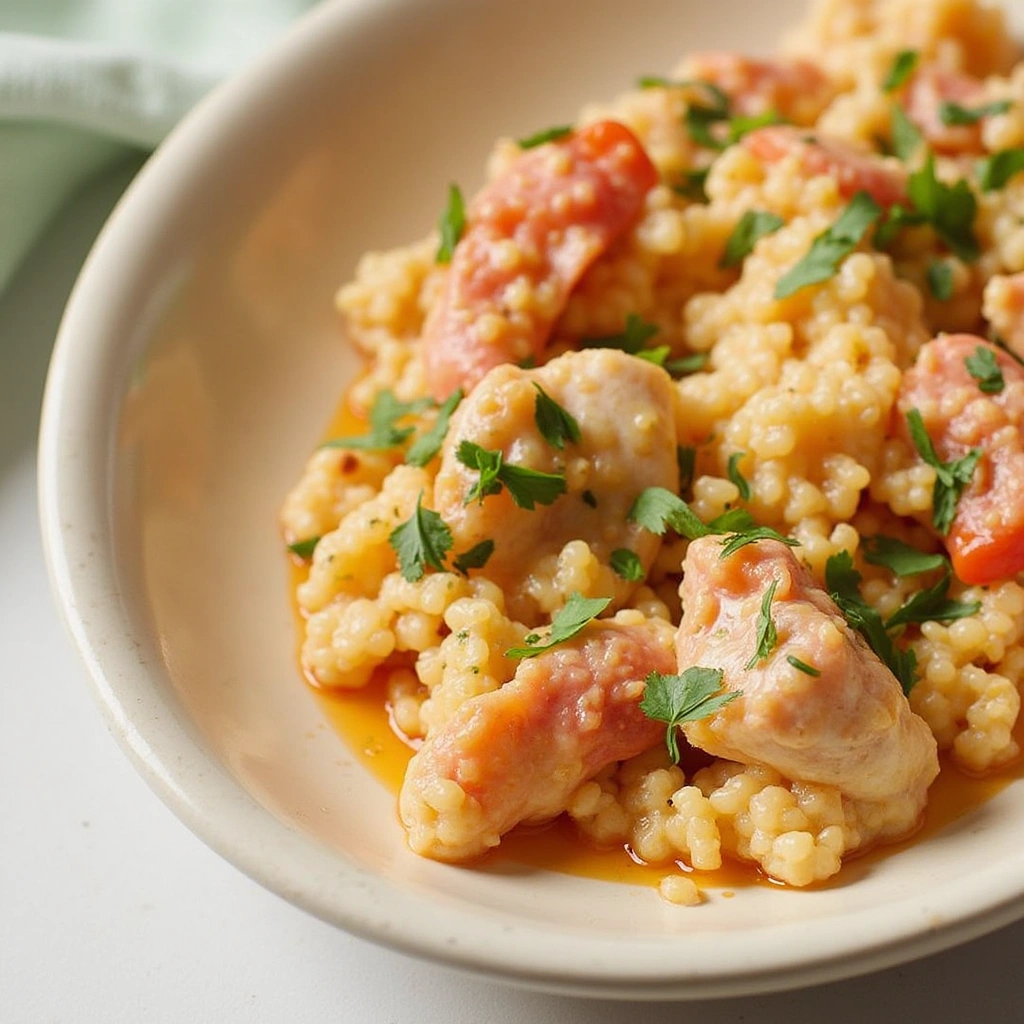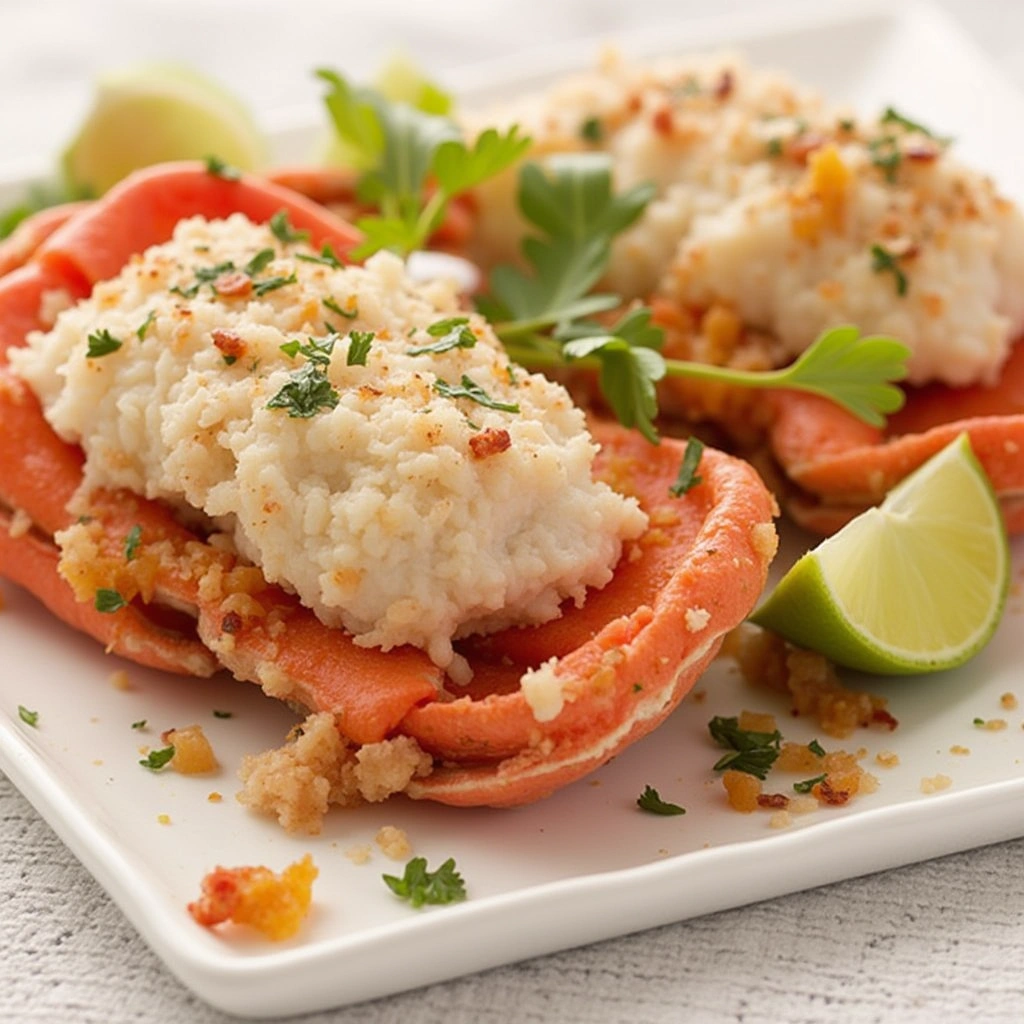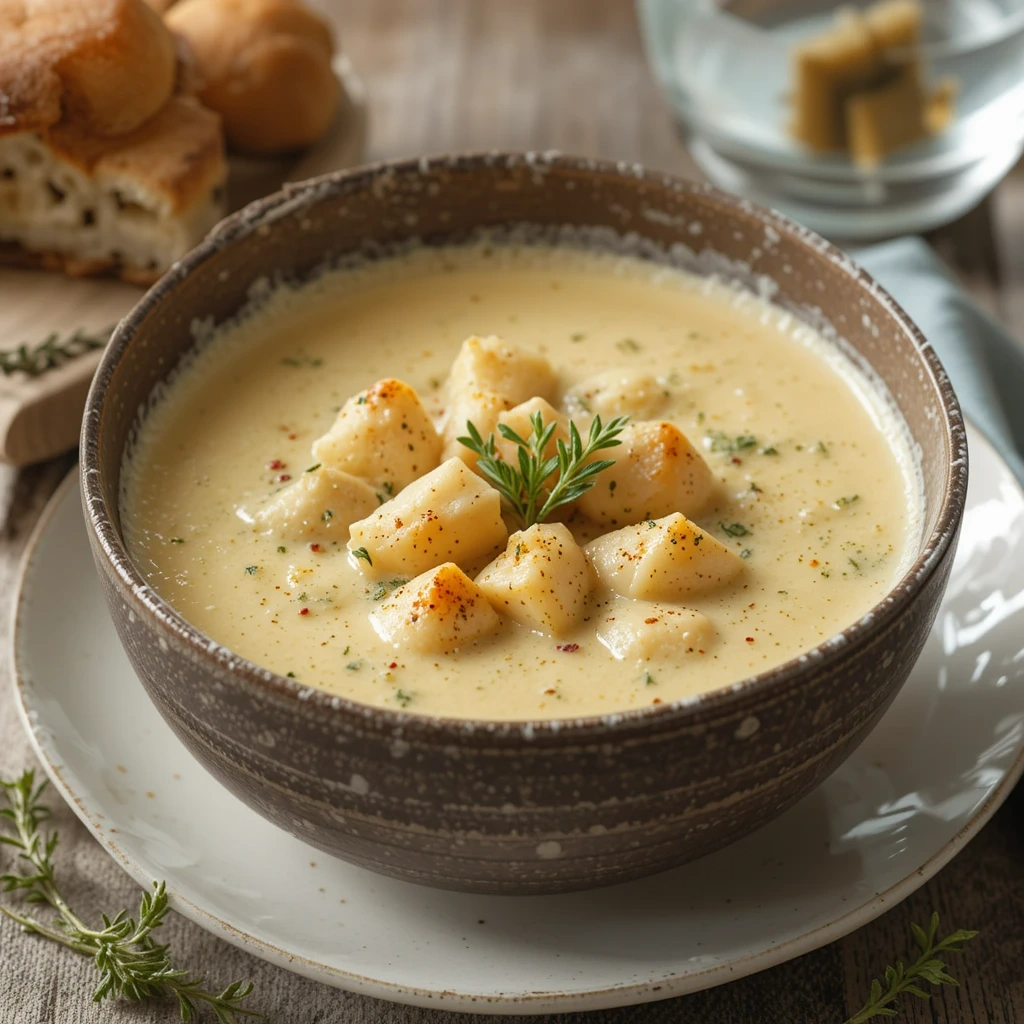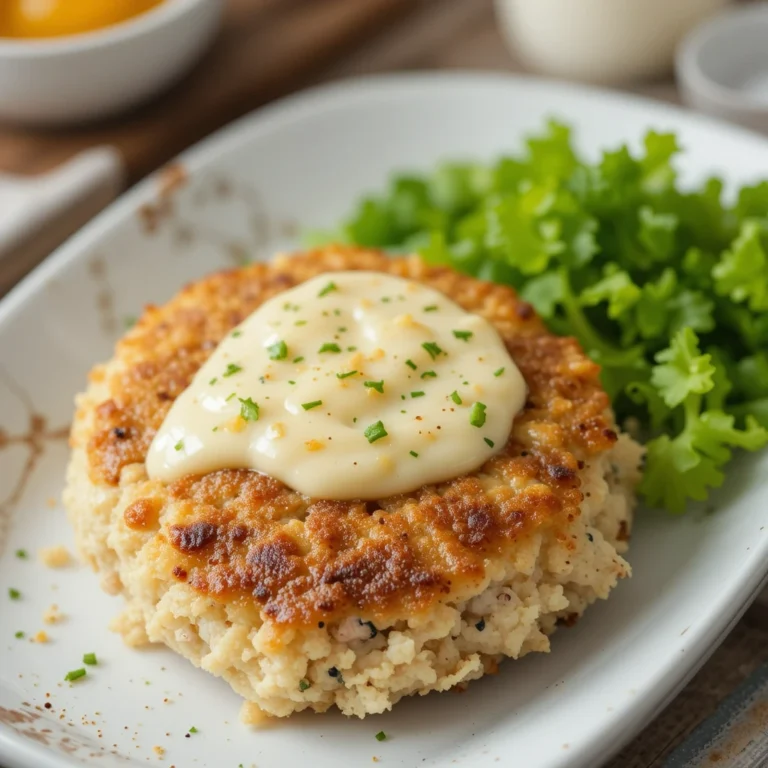Crab meat always brings me back to summers by the coast—where the scent of saltwater mingled with the sizzle of butter in the kitchen, and crab shells were cracked open at the table with both ceremony and laughter. My first real taste of fresh crab wasn’t in a fancy restaurant, but at a beachside shack, where the meat was still warm from the pot, dipped in melted butter, and served on paper plates. It was messy, joyful, and unforgettable.
Since then, I’ve come to appreciate crab meat not just for its sweet, tender flavor, but for its remarkable versatility. Whether nestled in a classic crab cake, stirred into a creamy bisque, or sprinkled over a fresh salad, it always feels like a touch of luxury—even when used in the simplest recipes.
Crab meat comes in various grades and cuts—lump, claw, backfin—and each brings something unique to the table. It’s not only delicious but also rich in protein, low in fat, and packed with essential minerals like zinc and selenium, making it a smart choice for both flavor and nutrition.
In this guide, we’ll explore the different types of crab meat, how to select the best quality, and creative ways to cook with it—from comforting weeknight meals to elegant dinner party starters.Crab meat is a versatile seafood cherished for its sweet, tender texture and high nutritional value. Extracted from various parts of the crab, including the claws, legs, and body, it has been a culinary delicacy for centuries. Its unique flavor and adaptability make it a favorite in a wide range of dishes, from simple salads to gourmet creations.
Table of Contents
Table of Contents

Crab Meat
Description
Crab meat always brings me back to summers by the coast—where the scent of saltwater mingled with the sizzle of butter in the kitchen, and crab shells were cracked open at the table with both ceremony and laughter. My first real taste of fresh crab wasn’t in a fancy restaurant, but at a beachside shack, where the meat was still warm from the pot, dipped in melted butter, and served on paper plates. It was messy, joyful, and unforgettable.
Ingredients
-
- 1 lb jumbo lump crab meat
-
- 1/2 cup mayonnaise
-
- 1 tbsp Dijon mustard
-
- 1 tsp Old Bay seasoning
-
- 1/2 cup breadcrumbs
-
- 1 egg
Instructions
- Mix all ingredients gently.
- Form into patties and chill for 30 minutes.
- Pan-fry until golden brown.
- Category: Fish
- Method: Pan
- Cuisine: American
What is Crab Meat?
Crab meat is the edible flesh extracted from different parts of a crab, including the claws, legs, and body. It has been a culinary delicacy for centuries, with each region having its signature crab dishes.
The history of crab meat in cuisine is rich and varied, with different regions showcasing their unique preparations. In the United States, Maryland’s blue crab cakes are iconic, celebrated for their rich flavor and flaky texture. These crab cakes, often made with lump crab meat, are a staple in Mid-Atlantic cuisine and have gained international recognition. The Chesapeake Bay, known for its abundant blue crab population, has played a significant role in popularizing this dish.
In Asian cuisine, crab meat is a key ingredient in many beloved dishes. Singapore’s Chili Crab, for instance, is a spicy, tangy dish that highlights the sweetness of crab meat. Similarly, Crab Fried Rice is a popular comfort food across Southeast Asia, combining the delicate flavor of crab with fragrant jasmine rice and aromatic spices. These dishes reflect the region’s emphasis on bold flavors and fresh ingredients.
French cuisine also embraces crab meat, often incorporating it into elegant dishes like bisques and soufflés. Crab bisque, a creamy, rich soup, showcases the meat’s natural sweetness, while crab soufflé demonstrates its versatility in more refined preparations. French chefs have long appreciated crab meat for its ability to elevate both simple and complex dishes.
Across the globe, crab meat continues to be a prized ingredient, celebrated for its delicate flavor and culinary flexibility. Its enduring popularity is a testament to its ability to adapt to diverse cooking styles and cultural traditions.
For a unique twist, try this Jumbo Lump Crab Meat Recipe, which highlights the delicate, buttery texture of lump crab meat.

Types of Crab Meat
Crab meat is categorized by both grade and species, each offering distinct textures and flavors suited for various culinary applications. Understanding these differences is essential for selecting the right type of crab meat for your dish.
By Grade
Crab meat is graded based on the part of the crab it comes from and its texture:
- Jumbo Lump Crab Meat: This premium grade consists of large, whole pieces of meat from the crab’s swimming fins. It is prized for its delicate texture and sweet flavor, making it ideal for high-end dishes like crab cakes, stuffed lobster, or dishes where the crab is the star.
- Lump Crab Meat: Slightly smaller than jumbo lump, this grade includes broken pieces of lump meat. It retains a sweet flavor and tender texture, making it perfect for salads, pasta, or crab dips.
- Backfin Crab Meat: A mix of smaller lump pieces and shredded meat, backfin is more affordable and works well in soups, casseroles, or crab-stuffed dishes where the meat blends with other ingredients.
- Claw Crab Meat: Known for its robust, slightly briny flavor, claw meat is darker and firmer. Its bold taste makes it a great choice for hearty dishes like stir-fries, gumbos, or crab bisques.
By Species
Different crab species offer unique flavors and textures:
- Blue Crab (Callinectes sapidus): Native to the Atlantic coast, particularly the Chesapeake Bay, blue crab is celebrated for its sweet, delicate meat. It’s the star of classic Maryland-style dishes like crab cakes and crab soups.
- Dungeness Crab: Found along the Pacific coast, Dungeness crabs are larger and yield meatier claws and legs. Their meat has a slightly nutty flavor, making it versatile for both simple and complex preparations.
- King Crab: Known for its impressive size and luxurious meat, king crab is often served as legs. Its meat is sweet, tender, and highly sought after, making it a centerpiece for special occasions.
Each type of crab meat, whether graded or species-specific, brings its own unique qualities to the table, allowing chefs and home cooks to tailor their dishes to the desired flavor and texture.
Want a luxurious crab dish? Try this Crab Brûlée Recipe for a decadent seafood experience.
Health Benefits of Crab Meat
Crab meat is not only a culinary delight but also a powerhouse of nutrition, offering numerous health benefits. Its high protein content makes it an excellent choice for muscle growth and repair, supporting overall physical health. As a lean protein source, crab meat is low in fat, making it a healthier alternative to many other protein-rich foods, particularly for those managing their weight or cholesterol levels.
One of the standout nutritional benefits of crab meat is its richness in omega-3 fatty acids. These essential fats are known to support heart health by reducing inflammation and improving cholesterol levels. Additionally, omega-3s play a crucial role in brain health, aiding cognitive function and potentially reducing the risk of neurodegenerative diseases.
Crab meat is also packed with essential vitamins and minerals. It is an excellent source of vitamin B12, which supports nerve function and red blood cell production, and selenium, a powerful antioxidant that boosts immunity. Other nutrients like zinc, copper, and phosphorus contribute to a healthy metabolism, strong bones, and a robust immune system.
Incorporating crab meat into your diet provides a delicious way to enjoy these health benefits while indulging in its sweet, delicate flavor. Whether enjoyed on its own or as part of a dish, crab meat is a nutritious addition to any meal.

How to Cook Crab Meat
1. Best Cooking Methods
- Steaming – Retains sweetness and texture.
- Boiling – Ideal for whole crabs and crab legs.
- Sautéing – Perfect for crab pasta dishes.
- Baking – Best for crab cakes and stuffed crab shells.
For a delicious crab and pasta combination, pair crab with Garlic Parmesan Chicken Pasta.
Best Crab Meat Recipes
1. Maryland-Style Crab Cakes
Ingredients:
- 1 lb jumbo lump crab meat
- 1/2 cup mayonnaise
- 1 tbsp Dijon mustard
- 1 tsp Old Bay seasoning
- 1/2 cup breadcrumbs
- 1 egg
Instructions:
- Mix all ingredients gently.
- Form into patties and chill for 30 minutes.
- Pan-fry until golden brown.
2. Creamy Crab Bisque
Ingredients:
- 2 cups backfin crab meat
- 1/2 cup heavy cream
- 2 tbsp butter
- 1/2 cup white wine
- 1/2 tsp thyme
Instructions:
- Sauté onions & garlic, then add stock.
- Blend until smooth and add crab meat.
- Simmer and serve hot.
For a perfect soup pairing, serve this with French Onion Soup Rice.

Crab Meat in Global Cuisines
Crab meat is a key ingredient in various cuisines worldwide, each showcasing unique flavors and techniques.
- American Cuisine – The U.S. is known for Maryland Crab Cakes, made with lump crab meat, and She-Crab Soup, a creamy Southern delicacy.
- Asian Cuisine – Dishes like Chili Crab from Singapore feature a rich, spicy sauce, while Crab Fried Rice is a staple in Thai cuisine.
- European Cuisine – French Crab Bisque is a smooth, flavorful soup, while Italian Crab Ravioli pairs delicate crab meat with handmade pasta for a refined dish.
How to Store Crab Meat
Crab meat is a delicate and perishable ingredient, so proper storage is essential to maintain its freshness and flavor.
Fresh crab meat should be consumed within 2–3 days and stored in the coldest part of your refrigerator, ideally at or below 40°F (4°C). It’s best to keep it in its original packaging or an airtight container to prevent contamination and odor absorption. For longer storage, crab meat can be frozen. When properly sealed and stored at 0°F (-18°C), frozen crab meat can last up to 6 months.
Thaw it in the refrigerator overnight before use to preserve its texture and taste. Pasteurized crab meat, which has been heat-treated to extend its shelf life, can last several months if unopened. Once opened, it should be treated like fresh crab meat and consumed within a few days.
FAQs About Crab Meat
- Can You Eat Crab Meat Raw?
No, raw crab meat may contain harmful bacteria or parasites. Cooking crab meat thoroughly ensures it is safe to eat and enhances its flavor. - What’s the Best Way to Store Crab Meat?
Fresh crab meat should be kept in the coldest part of your fridge, ideally in an airtight container. For longer storage, freezing is recommended. - What’s the Difference Between Lump and Jumbo Lump Crab Meat?
Jumbo lump crab meat comes from the crab’s swimming muscles and consists of large, whole pieces, prized for their delicate texture. Lump crab meat includes smaller, broken pieces and is slightly less expensive but still tender and flavorful. - What’s the Best Dish to Pair with Crab Meat?
Crab meat’s versatility allows it to shine in a variety of dishes, from crab cakes and salads to pasta and soups. The best pairing depends on the grade of crab meat and the desired flavor profile.
Proper storage and handling ensure that crab meat remains fresh and safe to eat, allowing you to enjoy its sweet, delicate flavor in a wide range of culinary creations.
Final Thoughts
Crab meat is a versatile, flavorful, and healthy seafood that can be enjoyed in various dishes, from simple crab cakes to gourmet seafood entrées. Whether you prefer classic recipes or unique fusions, the possibilities are endless!
Ready to cook? Start with the Jumbo Lump Crab Meat Recipe and explore other delicious dishes! 🦀🔥

